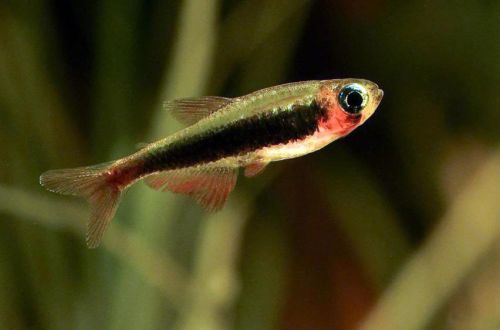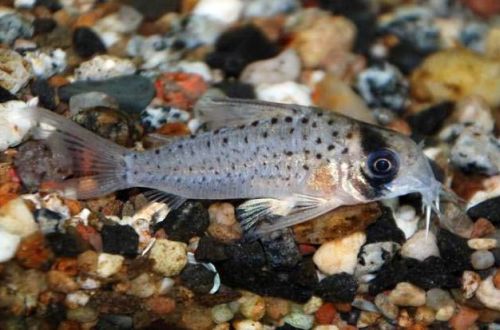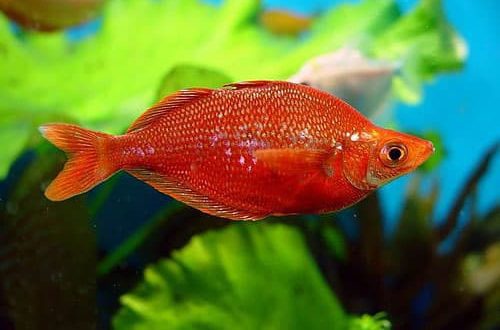
Microrasbora rubescens
Microrasbora rubescens or Red Dwarf Rasbora, scientific name Microrasbora rubescens, belongs to the Cyprinidae family. Despite the name, this fish does not belong to the Rasbora. The reclassification occurred in 2009 after a series of studies showing a close relationship of this species with Danio. However, the former names have been preserved.
Contents
Habitat
It comes from Southeast Asia from the territory of Myanmar. Inhabits the small mountain lake Inle and rivers connected with it. Currently, in the nature of Mikrorasbora, rubescens are on the verge of extinction due to active human economic activity in this region, massive fishing and the emergence of invasive species from other regions that compete with local fish species.
The lake has a shallow depth, about 2-3 meters. The bottom consists of loamy substrates, the water is clear and clean. Aquatic vegetation is presented mainly in the form of floating “green islands”, consisting of various clusters of plants, densely intertwined with each other. Many fish find shelter in these “islands”.
Brief information:
- The volume of the aquarium – from 50 liters.
- Temperature – 20-24°C
- Value pH — 7.0–8.0
- Water hardness – 12–21 dGH
- Substrate type – soft dark
- Lighting – subdued
- Brackish water – no
- Water movement – little or no
- The size of the fish is about 3 cm.
- Feeding – any food of suitable size
- Temperament – peaceful
- Content in a group of 20 individuals
Description
Adults reach a length of about 3 cm. The main color is orange with a silvery belly. Fins and tail are translucent. Sexual dimorphism is weakly expressed. Males and females are practically indistinguishable. The latter may look somewhat larger.
Food
If the fish is not exported from its natural habitat, but was grown in aquariums, then there will be no problems with the choice of food. Most popular foods of the right size will do. An optimal diet consists of a combination of dry and live/frozen foods, such as flakes and pellets with Artemia, Daphnia.
Maintenance and care, arrangement of the aquarium
Recommended aquarium sizes for a school of 8-10 fish start at 50 liters. The design is arbitrary, provided that a few simple rules are followed: the use of dark soil and the presence of areas with dense thickets of plants, including floating ones.
The artificial environment in which Microrasbora rubescens will be kept should resemble the conditions of Inle Lake – clear transparent water with an increased level of carbonate hardness. To do this, at a minimum, they regularly clean the aquarium of waste, change the water weekly to fresh water, and also use a productive filtration system, preferably from an external filter, to avoid excessive water movement. It will not be superfluous to have substances in the filter material, for example, marble chips, that increase the dGH values.
Behavior and Compatibility
A peaceful schooling fish, prefers to be in a community of the same miniature non-aggressive species. It should be acquired in a group of at least 8-10 individuals, with a smaller number there was a risk that Microrasbora rubescens would become too shy or intimidated.
Breeding / breeding
Breeding is simple and does not require separate preparations. The fish are able to breed in the main aquarium if conditions are favorable. With the onset of the mating season, the females scatter many eggs among the thickets of plants, which from that moment become left to themselves. The incubation period lasts 72–96 hours and depends on the water temperature. After another 1-2 days, the fry that have appeared begin to swim freely.
Despite the simple breeding that occurs by itself, ensuring the safety of the fry will require some effort. Since this species, like all Danios, does not have parental instincts, they are prone to eating their eggs, predation also extends to juveniles, so the survival rate of fry will be extremely low if they are not transplanted into a separate tank in time.
The spawning aquarium usually has a small volume – 10-15 liters is more than enough. It is filled with water from the main aquarium. The set of equipment consists of an airlift filter and a heater. No separate lighting is required. Feed with specialized powdered feed. As they grow older, larger foods, such as Artemia nauplii, are included in the diet.
Fish diseases
In a balanced aquarium ecosystem with species-specific conditions, diseases rarely occur. Often, diseases are caused by environmental degradation, contact with sick fish, and injuries. If this could not be avoided and the fish shows clear signs of illness, then medical treatment will be required. Read more about symptoms and treatments in the Aquarium Fish Diseases section.





